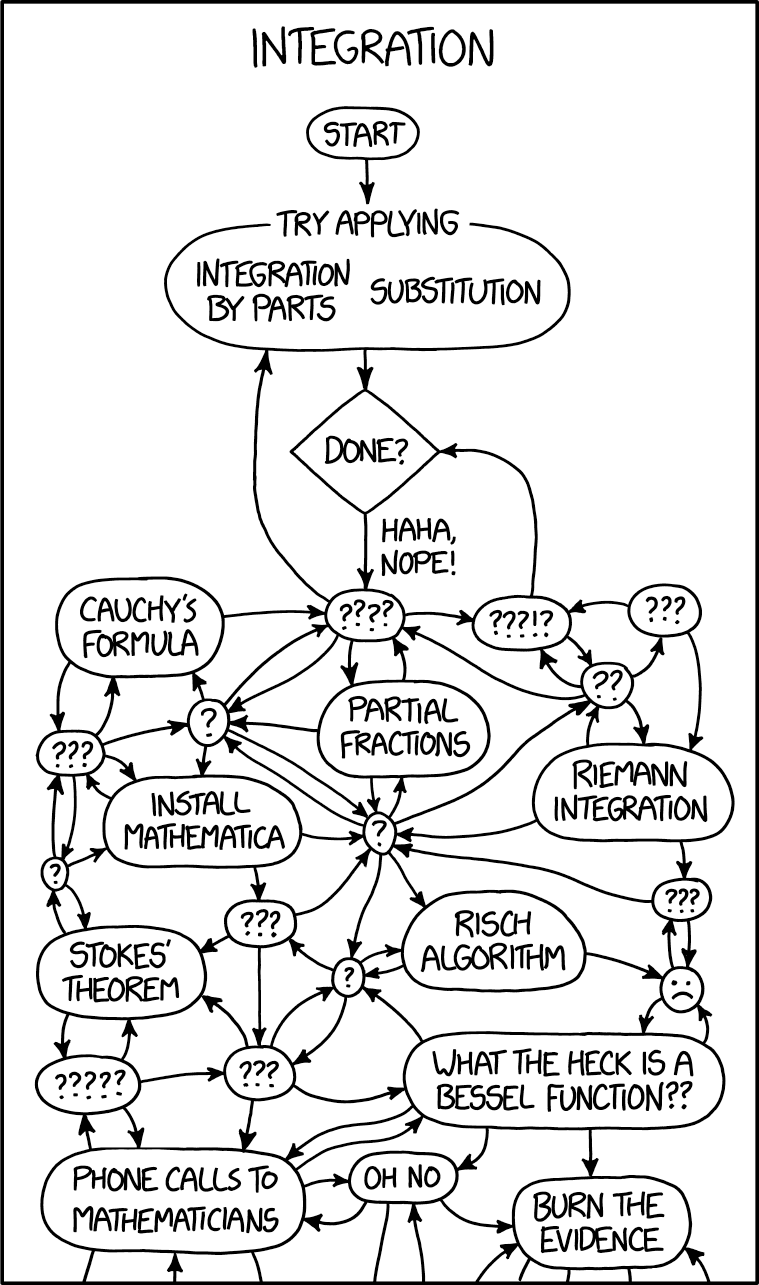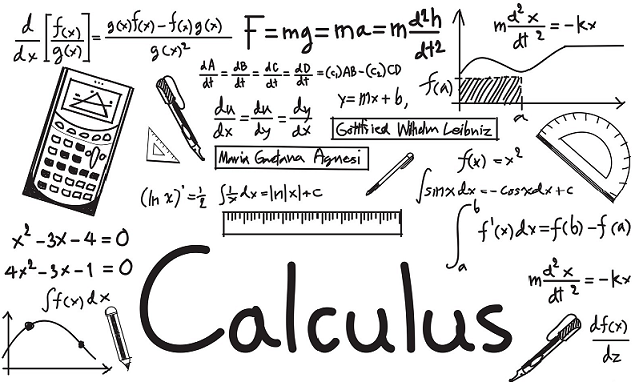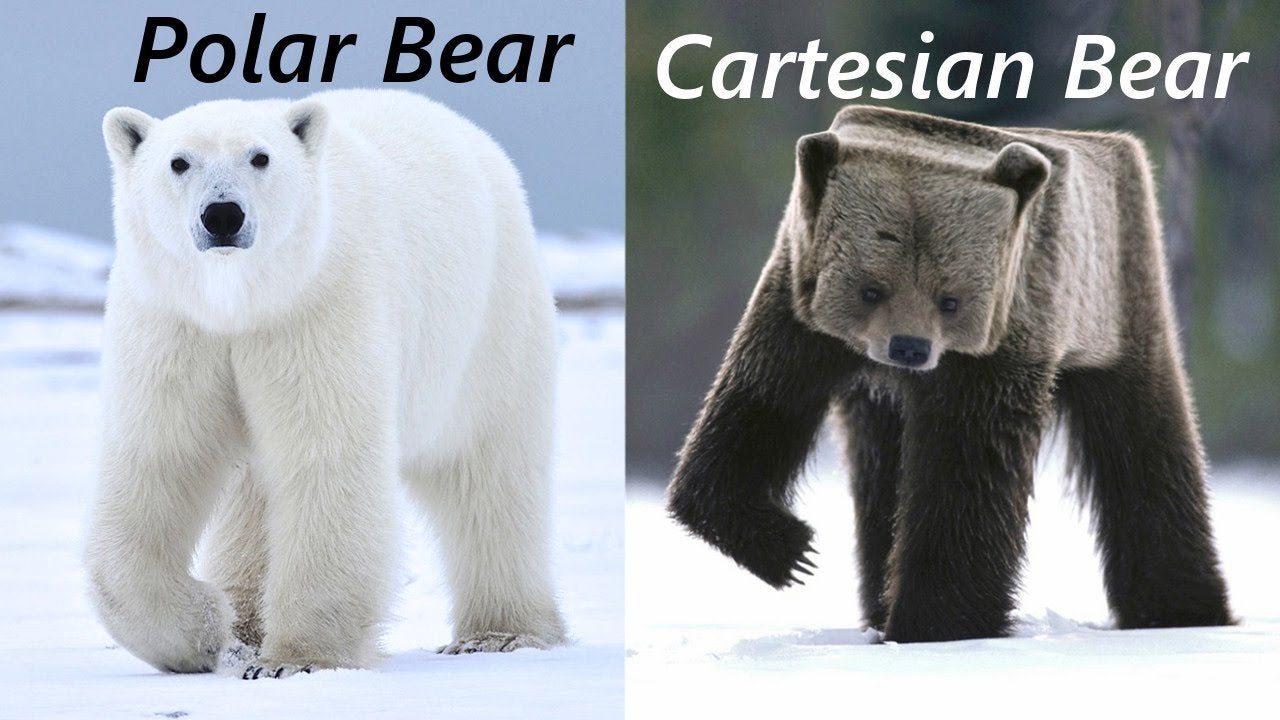Q: Are monsters good at math?
A: Not unless you Count Dracula.
ESC195: Calculus II builds on the skills you learned from ESC194: Calculus I. You’ll start by studying methods of integration—essentially, ways to compute the “unsolvable” integrals you might have encountered in Fall semester. You’ll also be introduced to sequences and series before diving into the world of multivariable calculus and vector functions. All these concepts are fundamental to science and engineering collectively!
Like ESC194, this course is a theoretical course that covers a lot of material at a fast pace and great depth, so keeping up with the work and further developing your problem-solving skills is key.
Note from your advisors: ESC195 might be the most important course in first- and second-year EngSci, at least from a course progress point of view. ESC195 is a prerequisite for five second-year courses; that makes it an important course to pass, but beyond that, understanding the course material is very important. While you are taking the course, put effort into actually understanding the content, rather than just blindly memorizing. Treat it like you’d treat a second language: the more you practice, the more comfortable you’ll get using it, and the better you’ll be able to do.
Professor

Professor James Davis
The instructor for ESC195 is Professor Davis, whom you will recognize from ESC194.
Professor Interview
“All of physics really came down to one equation – F = ma with calculus […] Everything from things like the Bernoulli equation governing fluid flow, to the rocket equation governing how big rockets have to be – it’s all just F = ma with calculus.”
“A student will only learn by doing. You’re not gonna learn by reading the textbook, you’re not gonna learn by attending the lectures alone. You actually have to do the work, and that’s the only way you’ll be able to learn this material”
“Anything that gets in between a student and pencil and paper is detrimental to the learning of mathematics.”
Course Highlights
- You will learn integration by parts, trig substitution, and partial fractions. These may sound complicated now, but you’ll get the hang of them.
- Infinite sequences and series – you’ll learn about some of their properties and applications, including how Fourier series can represent any periodic function.
- A lot of multivariable calculus! You can now solve problems in three dimensions. 😄
- Sketching polar graphs (all the complicated-sounding graphs like limaçons, lemniscates, and cardioids) and 3D surfaces (all the even more complicated-sounding graphs like paraboloids and hyperbolas).
Week in the Life of an ESC195 Student
Lectures
ESC195 has three hours of lecture each week. It may not seem like that much, but the lectures move very quickly. They cover derivations of course concepts and many worked examples. Sometimes students find it hard to take notes in this course because the professor tends to write quickly on the chalkboard. If you can’t keep up with his notes, we recommend you at least copy down all the examples. Knowing how professors solve examples can help you solve similar problems on your own. The course textbook (Stewart’s Calculus, same as in ESC194) supplements your course notes well.
Tutorials
Similar to ESC194, there are no practicals. There is one hour of tutorial every week. As in ESC194, you will be in smaller classes (20-25 students). TAs will work through problems similar to the assigned homework questions. At the end of each tutorial, you will also do a quiz. Each quiz is worth 2-3% of the final grade and are a great way to check that you are staying on top of the material. The questions for the quiz stem directly from the homework set for that week, so it incentivizes you to do the homework each week.
Assessments
As in ESC194, there are no formal assignments for this course beyond the weekly quizzes in tutorials. However, you are provided with recommended practice problems every week. DO THESE! They will build your calculus skills and help prepare you for assessments. Indeed, some questions on quizzes, midterms, and exams are similar to those assigned.
The assigned problems are all from the Stewart textbook (same textbook as in ESC194). As a reminder, you can buy the textbook in a package with a student solution manual, containing worked solutions to all odd-numbered problems. You can use it to check your work, discover alternative solution methods, and help yourself if you get stuck.
Note: Although it can be useful, the student solution manual is not required for this course. The Stewart textbook already contains the final answers to all odd-numbered questions.
Our recommendation to you, as in ESC194, is practice, practice, practice. Spending a few extra hours per week on calculus questions will make a huge difference for you!
Midterms & Exams
The midterms and final exam in ESC195 are similar to those in ESC194. Check out the ESC194 course overview for advice on how to prepare and manage exams. Key takeaway: practice with the Stewart textbook as well as past midterms/exams and be strategic when writing the assessments. The questions aren’t necessarily in order of difficulty so check later questions when you’re stuck to find questions you know how to solve before going back to the harder ones.
How to Succeed
Quick Tips & Equations
Note: You are not expected to know the following technical information. You will learn it all in the course.
- Taylor series is an infinite series of polynomial terms that can be used to approximate complicated functions such as exponential, logarithmic, and sinusoidal. As the degree of the polynomial (and number of terms) increases, the Taylor series becomes a better approximation for the function. Make sure you know how to derive a Taylor series (and possibly memorize some common ones), and how to calculate its error.
- Do A LOT of integration problems involving many different methods. Unlike derivatives, some integration problems will need trial and error to solve efficiently. Regular practice will let you solve them faster during exams.
- Practice sketching polar curves. Polar coordinates are essential to solving problems involving circles, cardioids, and limaçons, among others. And the more comfortable you are in solving problems in the polar coordinates, the easier it will be for you to work with cylindrical and spherical coordinates, introduced in second-year courses.
- Gain an intuition for gradients, which are like derivates in higher dimensions, and how they work. You should be able to derive them from first principles and from an algorithm and practice many problems with gradients such as tangent planes and Lagrange multipliers; you will learn about these methods in the last week of class, but do not ignore them as they will come up on the final exam.

More Details
All the tips from ESC194 will be useful here too, so check them out in the Calculus I overview. However, we still have one piece of advice specific to ESC195.
ESC195 is a very formula-heavy course. Even though you aren’t allowed to bring a formula sheet with you into midterms or the final exam, we highly recommend you make one to help you during revision, which can both help you keep track of what formulas you need to memorize, as well as help you in the actual memorization.
A specific example would be sequence and series techniques. When analyzing series, such as the convergence and/or limit of series, there will be many techniques to remember. To make it easier, we suggest creating a cheat sheet: list all the techniques (formally called “series convergence tests”) and when to use them. Then, as you are doing practice problems, you can reference this cheat sheet.
Another example: when doing vector function problems, there are many formulas that must be used and memorized, such as the formulas for the unit tangent vector or curvature of a plane. It is a good idea to keep all these formulas written down so that you can reread them and memorize them quicker.
Beyond First Year
- After ESC195, you’ll be able to appreciate not only more advanced scientific fields, but also more advanced math jokes—you know, jokes about cows and bears and all that.
- On a more serious note: the advanced math that you will learn in this course will help you understand and work in more specialized fields. Integration techniques and polar coordinates are used extensively in ECE259 (Electromagnetism) next year. Partial derivatives become important in a variety of other physics fields and vector functions are extremely important in computer science.
Note: The course code for Calculus II used to be MAT195. You may still see it referred to as such on some websites (e.g. courses.skule.ca).


